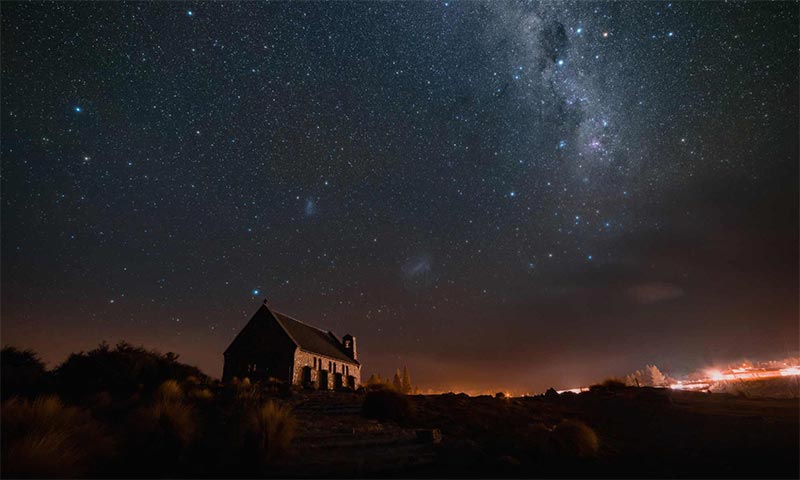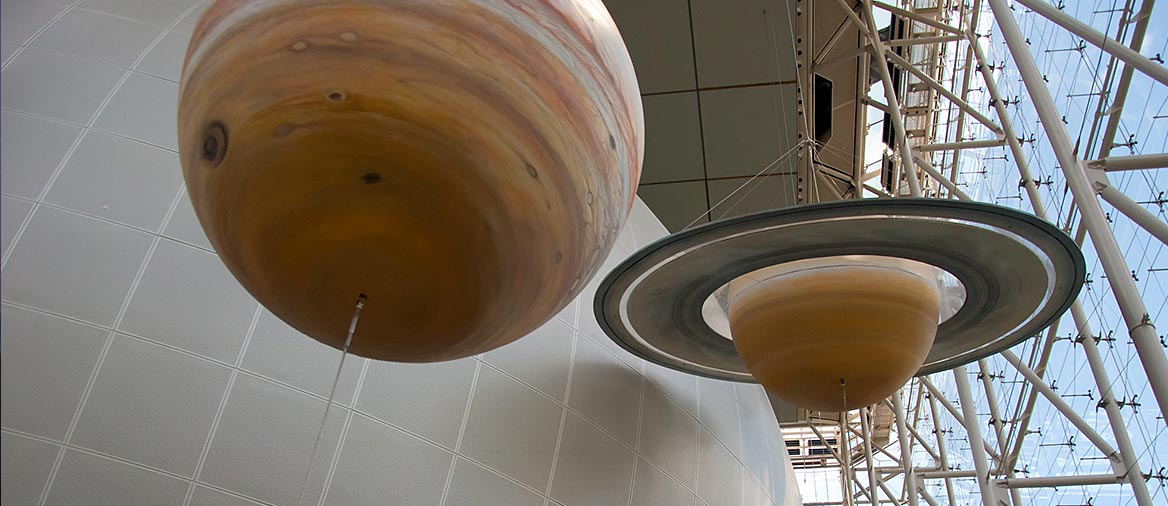Space is just so beautiful and inspiring. There’s something about looking up at the sky and watching the stars that make us feel connected to the universe and to each other. This is why astronomy is a popular hobby.
People have the misconception that in order to get started you need expensive equipment. The good news is this isn’t true at all. It is possible to get into astronomy without a telescope.
You don’t really need to spend a lot of money or put in great effort to get your feet wet with astronomy. We have collected a list of tips for beginner stargazers that will let you enjoy the night sky, and more importantly, have fun learning about the stars.
If you have a kid that has shown interest in astronomy, these tips will also help you introduce them to the activity so they can decide if it is something that piques their interest. In fact, following these activities is the best way for children to start with astronomy. It will allow you to measure their level of interest before investing money in a telescope that might end up gathering dust in a few weeks if they decide it’s not something they enjoy.
These are our 8 activities you can do to start learning astronomy without a telescope:
- Go camping and learn what you are looking at
- Visit your local planetarium
- Learn to identify the constellations
- Learn from your couch
- Join an astronomy club
- Take a stargazing tour on your next vacation
- Help discover new planets and stars
- Seek inspiration in media
1. Go camping and learn what you are looking at
Living in big, crowded cities has made it really hard to enjoy the night sky from home. Light pollution (artificial lighting) reduces the number of celestial objects you can appreciate in the sky as the city lights hide the light coming from the stars.
Even smaller towns where you used to be able to watch the milky way without a telescope a few decades ago have lost these beautiful starry backgrounds at night. Ask your parents how the view of the stars has changed in their hometown since they were kids. They will most likely tell you there used to be more stars in the sky.
If you want to enjoy the view from the stars these days you need to get away from the city and go places with lower light pollution. Camping is an excellent pretext to do this for a night or two with your family.
You will not need to bring any special equipment, just look up and enjoy the magnificent view. For kids that have lived all of their lives in cities where you can only see a few stars, simply watching a starry night will already be a great show.
If camping seems like too much work, you can always rent a cabin and have a relaxing trip.
This light pollution map will help you find places near you that have lower levels of light pollution.
Make sure to pre-install a star chart app on your phone before your trip. Once you are there, it will help you understand exactly what stars and constellations you are looking at. Sky Map is or favorite for android and is absolutely free.
2. Visit a planetarium

A planetarium is a theater where the movies are projected into a dome to simulate the sky. A lot of cities have at least one planetarium with films focused on astronomy or some other sciences. Check out the listings for your local planetarium to know when they are open and how to get tickets.
If your city doesn’t have a planetarium, it might be worth planning to visit one next time you take a family trip. Some planetariums around the world are really a sight to see and worth taking an afternoon to check out. Sometimes they are built by famous architects and the buildings are just works of art.
My personal favorite is the Hemisfèric in Valencia, Spain. It is part of La Ciutat de Les Arts I Les Sciences (The City of Arts and Sciences), a 5 building complex focused on sciences and arts.
Some other planetariums that are worth checking out are:
- Hayden Planetarium in NYC
- Science Museum in Nagoya, Japan
- Albert Einstein Planetarium in Washington, D.C.
We have an article listing our favorite 8 planetariums in the world if you want to check it out.
Planetariums do a great job at introducing people to astronomy in a very visual and interactive way. Some exhibitions are even guided by astronomers that will answer questions visitors might have about the content of the show.
Tickets for planetarium exhibitions are usually reasonably priced and students can almost always get a discounted price or even free admission. The profits usually go into supporting the planetarium and producing new movies and exhibition so it’s money well spent.
Some planetariums also have telescopes available for the public to try out and the staff will guide you on how to use it.
Here’s a list of planetariums around the world so you can check out if there’s one close to you.
3. Learn to identify constellations
In ancient times people took groups of stars that looked like certain animals or objects and grouped them together into constellations. They used constellations for navigation, agriculture and even a bit of mysticism. For example, the twelve zodiac signs come from constellations the ancient greeks named and even in modern times, they are still used by people who believe in astrology and horoscopes.
Learning to recognize constellations and learn their names and stories is a fun, easy way to get started with astronomy and for the most part, it doesn’t require any special equipment. At least the original 48 constellations Greeks cataloged can be seen without a telescope.
All you need to get started with constellations is to get a star chart. In the old days, star charts were basically big printed maps or a rotating multi-layered device where you would choose the time of the year and it would rotate to show you the stars that were visible at that point in time. Thankfully, in this day and age, star charts have evolved and now simply come in the form of free phone apps that automatically detect your location and show you the shape and position of the stars you should be looking for. Our favorites are SkyView for Android and Star Chart for iOS.
4. Learn from your couch
Documentaries are an excellent way to learn a new subject. The fact that it is a visual medium makes them much more engaging and they can compress a lot of facts into a small amount of time.
There are lots of documentaries with great production value and for every kind of audience. You can be a complete beginner and get a lot out of them.
Here are some recommendations for great documentaries for beginners and the streaming service they can be found on.
- Cosmos – Netflix
- BBC’s Wonders of The Universe – bbc.com (UK only but you can use a proxy)
- A Traveller’s Guide to the Planets – Disney+ or Prime Video
5. Join an astronomy club

Astronomy is a science that makes you really excited to share with other people. Most astronomers, both professional and amateur are nice people willing to help newcomers learn and get into astronomy.
This is why there are many astronomy clubs around the globe where people get together and organize stargazing trips, talks, and discussions.
An astronomy club is basically a community where people seek to learn more and experienced astronomers share their knowledge (and sometimes their equipment) with the community in order to grow the number of amateur astronomers around the globe.
Some clubs host special newbie nights where they welcome everyone who wants to learn. They’ll let you use their equipment and show you the ropes. They are usually very friendly, welcoming communities. To find an astronomy club near you, try this community finder or check out local Facebook groups.
6. Take a stargazing tour

If you have a vacation coming up or you happen to live nearby an observatory, scheduling one night to take a stargazing tour might be for you. There are lots of organizations and institutes that organize events where you will be able to use advanced telescopes that would usually be too expensive for beginners. They will set up everything for you, guide you and show you how to use everything. All you need to do is enjoy a great night of viewing the sky.
The most popular countries for astronomy tourism are:
- New Zealand
- Spain
- Argentina
- Chile
There are plenty of other options around the world. Some events will also allow you to tour state of the art observatories.
In the U.S. there are events you can attend to constantly in places like the Grand Canyon, the Steinaker Park in Utah and the Anza-Borrego Desert State Park in California.
Make sure to check the weather forecasts previously as having the best experience in these tours depends on having clear skies. You don’t want to get there only to have the
7. Help discover new planets and stars
The amount of data captured by telescopes in modern days is so much that there isn’t enough processing power and astronomers to analyze all of it. This is why agencies like NASA have turned to
8. Get inspired by science fiction

There’s no doubt science fiction plays a big role when it comes to getting people interested into astronomy. Ask most astronomers and they will tell you their interest in space sparkled when they watched Star Wars.
Watching or reading science fiction can serve as the inspiration to get someone interested in the stars, even if sometimes it is not a very accurate representation.
Some of our favorite fiction works about space are:
Books:
- Hitchhiker’s Guide to the Galaxy – Douglas Adams
- The War of the Worlds – H.G. Wells
- Robot Visions – Isaac Asimov
Movies:
- Star Wars
- Interstellar
- The Martian
Conclusion
As you can see, there are plenty of ways to get into astronomy without committing to buying a telescope until you are absolutely ready. We hope this list has helped you on your path to becoming an astronomer. Let us know in the comments if you have any more ideas we should add to the article.
Enjoyed this article?
Get daily 10-minute PDFs about astronomy to read before bed!
Sign up for our upcoming micro-learning service where you will learn something new about space and beyond every day while winding down.







